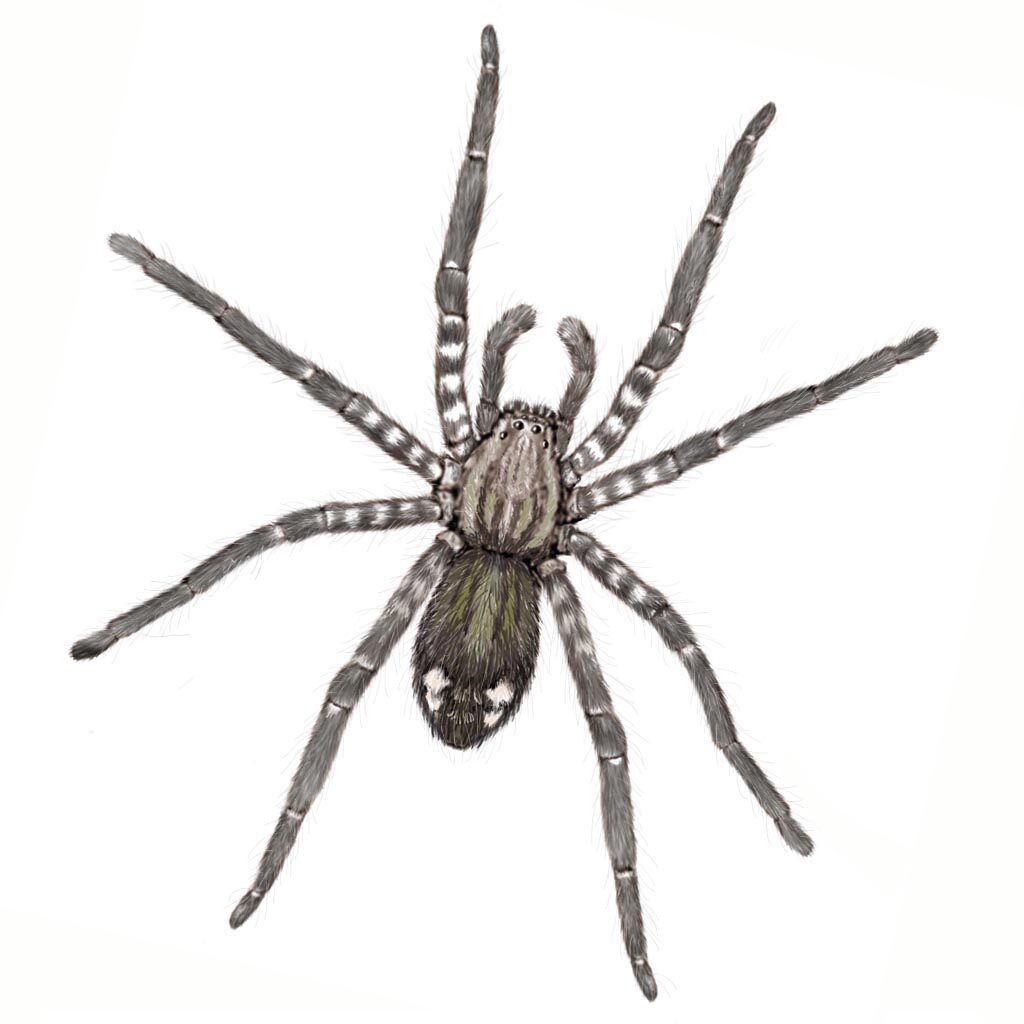Tiger Wandering Spider

This is one of Central America’s largest spiders, having a leg-span of up to 5 “, about two-thirds to three-fourths that of a tarantula. It’s much lighter-bodied – like the difference between a St. Bernard dog (the tarantula) and a greyhound (the TWSpider). It’s sometimes called a banana spider, but all kinds of spiders are called that, so “banana spider” is not a good identifier.
The Tiger Wandering Spiders I meet at my house are tan with chocolate-striped legs which immediately identify them, although in other parts of their range they may also have reddish and yellow markings. They range from eastern Mexico through Guatemala, Honduras, and Belize.
While they may look scary, they are gentle, mostly slow-moving spiders, waiting in plain sight for prey, which consists of moths, katydids, earwigs, cockroaches, flies, and grasshoppers, plus small salamanders, frogs and lizards. These are good spiders to welcome to your environment, as they are an important component of the ecosystem and help keep insect populations in check. This species’ bite is mildly venomous, being similar, pain wise, to that of a bee-string. And as with bees, you try to avoid being stung/bit, but if it happens, not to worry.
Tiger Wandering Spiders don’t make webs, but wander about or lie in wait for prey. They prefer to hide in the trees during daylight hours, between banana leaves for instance, and come out at night to hunt on the flat leaf surfaces. You might also find them on your house walls, waiting for something delicious to pass by, hanging out on the same patch of wall for a week or more if you don’t chase them away. My small friend Harriet stuck around for several weeks up near the ceiling in my bathroom.
Since they don’t have stable home-sites, the females attract mates by adhering pheromones to a long silk thread. A male which comes across the pheromone-saturated silk line will twitch it in a specific pattern, which the female then answers with her own vibration, guiding the male to her side for mating.
Females are larger and heavier than males, and produce about 1500 eggs every month or two. The hatched spiderlings take up to a year to mature, molting frequently until they reach full size. But don’t worry – a huge proportion of the hatchlings – maybe as many as 99% – serve as food for other predators in the ecosystem. You won’t suddenly discover Tiger Wandering Spiders swarming on every surface.
The Tiger Wandering Spider is a favorite scientific research subject due to its large size, calm disposition and the ease at which it can be bred in the laboratory. It is the most studied species of spider in the world. More here.